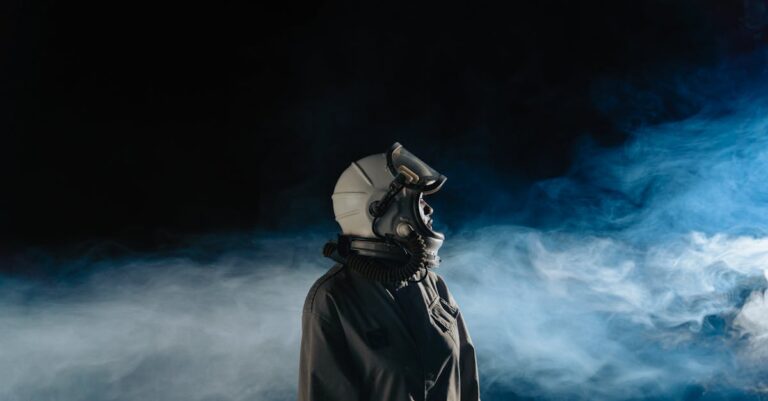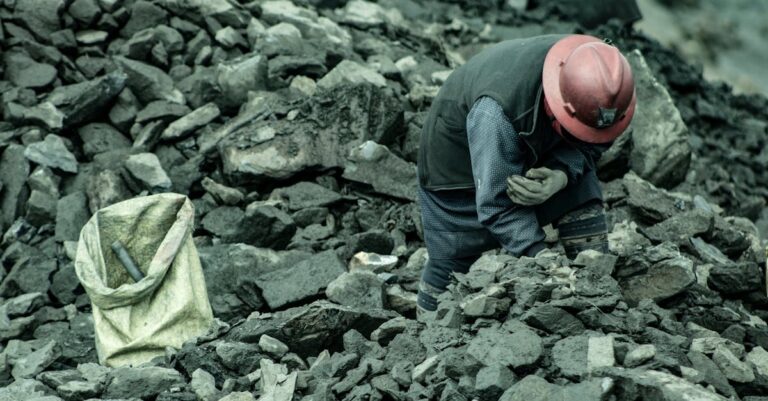
## The Ash Bloom Cartography
Old Man Tiber hadn’t smelled real salt air in forty years. Dust motes danced in the single shaft of light piercing his workshop’s gloom, illuminating layers of parchment stacked like forgotten strata. He traced a brittle finger across a depiction of what should have been the Ross Ice Shelf, but wasn’t. Not exactly.
The ink bled a faded crimson – crushed carnelian, he always insisted, for warmth. A warmth that wasn’t present in the Republic’s current fiscal year, or its geographic reality.
He adjusted his spectacles, their lenses thick as bottle bottoms. The map showed fissures branching across the white expanse, glowing with an improbable network of violet veins. He called them ‘the Ash Blooms.’
“Beautiful, aren’t they?” he rasped to the empty room. He didn’t wait for a reply, never did.
The cartography wasn’t geography. It was persuasion.
A knock – sharp, demanding – fractured his concentration. He didn’t bother answering immediately. Let them stew.
The door creaked open, revealing Captain Valeria “Val” Rourke, her uniform immaculate despite the grit clinging to its seams. Her eyes, the color of chipped flint, swept over the workshop with practiced assessment.
“Tiber,” she stated, not asked. “The Merchant Guild wants an update.”
He gestured toward a cluttered table laden with charts. “They have one, Captain. Laid out for their consumption.”
Val didn’t bother looking. “They want *you*. To explain the discrepancies.”
“Discrepancies?” He sniffed. “They misunderstand artistry, I think. A little imaginative flourish is lost on ledger men.”
“They’re concerned about the heat signatures. The volcanic activity you charted… doesn’t exist.”
“It exists where it *needs* to. For passage.” He tapped a particularly vibrant bloom near the supposed Transantarctic Mountains. “These channels would provide… sheltered routes.”
“Sheltered from what, Tiber? The cold?” Val’s voice was flat. “The Guild is considering sending a preliminary expedition.”
He finally met her gaze, his own eyes dark and unsettling. “Then they will need accurate charts.”
“They want proof. Independent verification.”
He chuckled, a dry, rattling sound. “Verification? The ice holds its secrets well, Captain. Some things are best left…unproven.”
“Don’t play coy. This isn’t some scholarly exercise anymore. People are talking about fortunes to be made, silk routes bypassing Imperial tariffs. The Guild isn’t interested in artistry.” She paced the room, her boots silent on the flagstone floor. “They want access.”
“Silk,” he murmured, a flicker of something akin to sadness crossing his face. “A foolish indulgence, really. The Empire had enough troubles without importing frivolous luxuries.”
“The Empire is dust, Tiber. And silk sells.” Val stopped before him, her presence a rigid challenge. “Tell me about the channels. *Honestly*.”
He sighed, running a hand over his thinning hair. “They began as an attempt to…revitalize old Imperial surveys. The early explorers, before the fracturings, they noted geothermal vents, subsurface warmth. I… expanded upon them.”
“Expanded?”
“I theorized a network, connected by volcanic tubes. Calderas providing navigable passages under the ice.”
“And the Ash Blooms?”
He pointed to a detailed rendering of a bloom, its petals unfurling in impossible shades of violet and gold. “Bioluminescent flora. Cultivated within the channels, thriving on geothermal energy. A navigational aid, a sensory trigger.”
“A story,” Val corrected. “An elaborate fabrication.”
“No! A key. The blooms would emit a specific fragrance, unique to each channel. An expedition could follow the scent trail.” He leaned closer, his voice dropping to a conspiratorial whisper. “A guarantee of safe passage.”
“Or purposeful confusion.” Val’s tone was sharp, her gaze unwavering. “The Guild is also questioning the floral bioluminescence itself. It defies everything we know.”
“Everything *you* know,” he countered. “The ice holds wonders, Captain. Things beyond your comprehension.”
“And you expect people to risk their lives on these…wonders?”
He turned away, walking towards a large globe depicting the Antarctic continent. “They risk their lives every day. For less.” He traced a finger along the icy coastline, his touch surprisingly gentle. “This…this is hope. A chance to rebuild. To circumvent the stagnation.”
“By lying?”
He stopped, his gaze fixed on a point beyond the horizon. “Sometimes,” he said quietly, “a little deception is necessary to reveal a greater truth.”
Val spent the next three days poring over Tiber’s charts, cross-referencing them with existing Imperial surveys. The more she examined his work, the more unnerved she became. His detail was astonishing. He’d accounted for everything – ice drift, subsurface currents, even atmospheric anomalies. But it was all built on a foundation of… nothing.
She found scattered notes, written in a cryptic shorthand she struggled to decipher. References to long-forgotten botanical expeditions, alchemical formulas, even… ritualistic practices?
She discovered a hidden compartment in his desk, containing a small, sealed vial filled with a viscous, iridescent liquid. The scent was intoxicating – floral, musky, incredibly potent. It matched the descriptions of the ‘bloom fragrance’ in his notes perfectly.
She brought the vial to Master Alchemist Elias Vance, a man known for his unflinching objectivity.
“Remarkable,” Elias said after hours of analysis, peering through a microscope. “A complex organic compound. Synthesized, not naturally occurring. Highly unstable.”
“Can you replicate it?” Val asked.
Elias shook his head. “The base components are rare, bordering on mythical. And the synthesis process… it’s beyond my understanding. It requires an alchemical mastery I haven’t encountered.”
“He claims it’s the fragrance of a bioluminescent flower growing beneath the ice,” Val explained.
Elias paused, his expression unreadable. “A fascinating theory. But highly improbable.”
Val returned to Tiber’s workshop, finding him meticulously redrawing a section of the Weddell Sea. He didn’t acknowledge her presence, his hand moving with steady precision across the parchment.
“They analyzed the fragrance,” she said, her voice carefully neutral. “It’s synthetic.”
He finally looked up, his eyes clouded with a strange mixture of sadness and defiance.
“Of course it is,” he said, his voice barely a whisper. “The blooms are… delicate. They require cultivation.”
“You created it,” Val stated. “All of it.”
He didn’t deny it. He simply continued drawing, his hand unwavering.
“The Empire lost its botanical knowledge during the fracturings,” he explained, his voice distant. “The techniques for cultivating these flora were almost lost. I… spent decades reconstructing them.”
“Why?” Val demanded. “What was the purpose?”
He stopped drawing, his gaze fixed on a point beyond her shoulder.
“The ice is changing,” he said slowly. “It’s melting. The old routes are collapsing.”
“You believe these channels can provide an alternative?”
He nodded. “A viable path for trade, exploration… even settlement.”
“Based on a lie,” Val countered.
He shook his head. “Not entirely. The geothermal vents *exist*. The subsurface currents are real. I simply… amplified them. Expanded upon the potential.”
“You manipulated people,” Val accused.
He sighed, running a hand over his tired face. “I offered them hope. A chance to rebuild what was lost.”
“At what cost?” Val pressed.
He didn’t answer immediately, his gaze drifting towards the globe depicting the Antarctic continent. Finally, he spoke, his voice barely audible.
“The cost of believing in something extraordinary,” he said quietly. “Something beyond their comprehension.”
Val spent weeks dissecting Tiber’s motivations, piecing together the fragmented history of his obsession. She discovered he was a descendant of Lord Alistair Thorne, a renowned Imperial cartographer who led the initial botanical expeditions to Antarctica centuries ago.
Thorne believed the continent held the key to unlocking untold wealth and botanical secrets. He dedicated his life to mapping the geothermal vents and cultivating rare flora. But his work was cut short by the fracturings, leaving his research incomplete and his reputation tarnished.
Tiber had dedicated his life to completing Thorne’s work, driven by a desperate need to restore his ancestor’s legacy. He believed the Ash Blooms were not just a navigational aid, but a symbol of hope – a testament to humanity’s ability to overcome adversity.
She also discovered unsettling evidence suggesting Tiber wasn’t just cultivating the blooms for practical purposes. His notes detailed elaborate rituals, invoking ancient spirits and harnessing geothermal energy to amplify the fragrance – believing it possessed unique properties capable of influencing perception.
She confronted him with her findings, finding him hunched over his desk, meticulously redrawing a section of the Bellingshausen Sea.
“You weren’t just creating a map,” she stated, her voice firm. “You were manipulating people’s minds.”
He didn’t deny it. He simply continued drawing, his hand unwavering.
“The fragrance is… potent,” he explained, his voice distant. “It can unlock dormant senses, heighten perceptions.”
“You were using it to convince people your lies were true,” Val accused.
He shook his head. “Not entirely. The fragrance simply… facilitates belief.”
“Belief in what?” Val pressed.
He stopped drawing, his gaze fixed on a point beyond her shoulder.
“In the possibility of something extraordinary,” he said slowly. “In the potential for renewal.”
Val looked around his workshop, at the meticulously detailed maps, the strange alchemical apparatuses, the numerous botanical specimens. She realized he wasn’t driven by greed or ambition. He was driven by a desperate need to believe in something beyond the mundane – a world where hope could bloom even in the coldest of landscapes.
The Merchant Guild was already preparing an expedition, convinced by Tiber’s charts and the intoxicating fragrance. Val knew she couldn’t stop them. But she could warn them. She could prepare them for the illusions they were about to encounter.
She spent days gathering information, compiling a detailed report outlining Tiber’s deception and the potential dangers of the expedition. She warned them about the altered perceptions, the unreliable sensory triggers, and the possibility of encountering unforeseen dangers beneath the ice.
She also included a detailed map outlining the actual geothermal vents and subsurface currents, providing them with a realistic guide to navigating the Antarctic landscape.
She presented her report to Captain Marius Holt, the leader of the expedition. He listened intently, his expression unreadable.
“You believe he’s deliberately misleading us?” Holt asked when she finished.
Val nodded. “He believes he’s offering us hope.”
Holt paused, his gaze drifting towards the globe depicting the Antarctic continent.
“Hope can be a dangerous thing,” he said slowly. “Especially when it’s built on lies.”
He thanked her for her report and promised to take her warnings seriously.
As the expedition prepared to depart, Val stood on the docks, watching as the ship sailed towards the icy horizon. She knew she couldn’t stop them from encountering the illusions Tiber had created. But she could hope they would be prepared for what lay ahead.
She looked towards the sky, a strange mixture of hope and trepidation filling her heart. She knew this expedition wouldn’t just be a journey across the Antarctic landscape. It would be a journey into the depths of human perception – a test of their ability to distinguish reality from illusion. And she couldn’t help but wonder if they would emerge unscathed.
The ship returned six months later, battered and bruised, its crew shaken but alive. Holt met with Val immediately, his expression grim.
“He was right,” Holt said slowly. “About the vents. The currents. He mapped them with astonishing accuracy.”
“But the blooms?” Val asked.
Holt paused, his gaze drifting towards a small vial filled with a viscous, iridescent liquid.
“They weren’t real,” he said slowly. “Not as he described them.”
“The fragrance?”
Holt shook his head. “It altered our perceptions. Made us see things that weren’t there.”
“Did anyone suffer lasting effects?” Val asked.
Holt paused, his expression clouded with sadness.
“A few,” he said slowly. “They still struggle to distinguish reality from illusion.”
He handed her a small, intricately carved wooden box.
“They found this in one of the caves,” he said slowly. “It was hidden beneath a layer of ice.”
Val opened the box, revealing a small, meticulously detailed map depicting a hidden caldera beneath the ice. The map showed a network of geothermal vents and subterranean tunnels, leading to a vast underground chamber.
“What is it?” Val asked.
Holt paused, his expression unreadable.
“Tiber’s legacy,” he said slowly. “He wasn’t just creating illusions. He was uncovering a hidden world.”
Val looked at the map, her heart pounding in her chest. She realized Tiber wasn’t just a cartographer. He was an explorer. A visionary. And he had uncovered something extraordinary beneath the icy landscape.
The expedition had faced illusions and altered perceptions, but they had also uncovered a hidden world beneath the ice. And Val knew this discovery would change everything.
She looked towards the sky, a strange mixture of hope and trepidation filling her heart. She knew this was just the beginning. The journey had begun, and it would lead them into the depths of human perception – a test of their ability to distinguish reality from illusion. And she couldn’t help but wonder what they would discover next.


